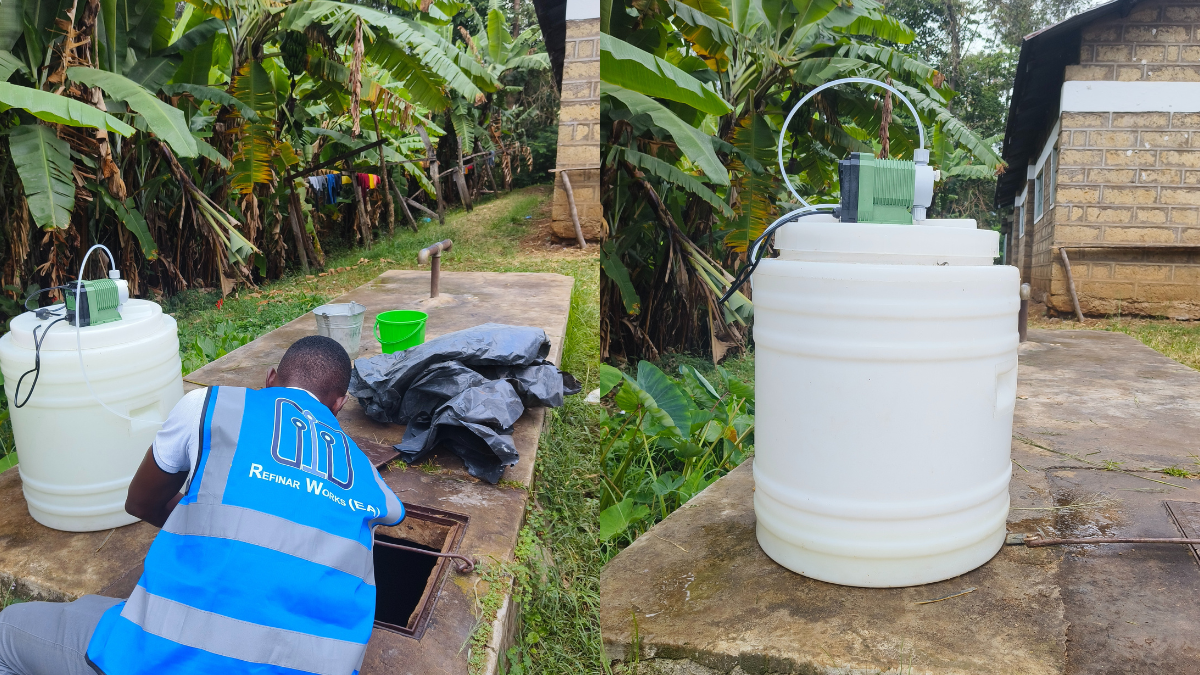When it comes to water treatment, the careful application of chemicals is essential to improving water quality and guaranteeing adherence to regulations. Chemical dosing is a crucial aspect of this process, aiming to improve the quality of water by addressing various contaminants and ensuring it meets regulatory standards. Different chemicals are used for specific purposes in the water treatment process. In this article, we explore more of what is chemical dosing and how it works in Water treatment.
What is Chemical Dosing?
Chemical dosing refers to the controlled addition of specific chemicals to a system or process, often in measured quantities, to achieve desired outcomes. This practice is commonly employed in various industries, including water treatment, wastewater management, industrial processes, and healthcare. In the context of water treatment, chemical dosing is a critical aspect of the treatment process. It involves the precise introduction of chemicals into water to address specific issues such as contaminant removal, disinfection, pH adjustment, and the enhancement of various treatment stages.
Types of Chemicals Used
Coagulants and Flocculants
These chemicals are added to water to facilitate the formation of larger particles (flocs) from smaller ones. Coagulants destabilize particles, while flocculants promote their agglomeration, making it easier to remove impurities during subsequent treatment processes.
Disinfectants:
Chemicals like chlorine, chloramines, ozone, and UV light are dosed into the water to kill or inactivate harmful microorganisms, ensuring that the treated water is safe for consumption.
pH Adjusters:
Lime, caustic soda, or sulfuric acid may be dosed to control the acidity or alkalinity of the water. Maintaining the correct pH level is crucial for the effectiveness of coagulants and other treatment chemicals.
Anti-Scalants and Corrosion Inhibitors:
These chemicals are dosed to prevent the buildup of scale on surfaces and protect metal components from corrosion within water treatment systems.
Adsorbents:
Certain chemicals, such as activated carbon, may be dosed to adsorb and remove specific contaminants from water.
Chemical Dosing Process
In water treatment, the chemical dosing process is a choreography of precise steps designed to transform raw water into a clear and potable resource. Each stage plays a crucial role in eliminating impurities and contaminants, ensuring the final product meets stringent quality standards.
Coagulation
Coagulation, this first step involves the strategic addition of coagulants. These chemicals initiate the destabilization of particles suspended in water. As these particles lose their repulsive forces, they start to clump together, forming larger and more manageable aggregates. This process sets the stage for easier removal of impurities in subsequent treatment steps.
Flocculation
Here, flocculants take center stage, coordinating the elegant creation of bigger particles. Gentle moving or agitation promotes these particles to form cohesive flocs. These flocs, which resemble soft clusters, are required for the efficient removal of contaminants in the final stages of the treatment process.
Sedimentation
As the water treatment performance progresses, sedimentation takes the spotlight. In this stage, the flocs, having executed their role admirably, gracefully descend to the bottom of the treatment vessel. This settling process is akin to the curtain falling on the suspended particles, leaving behind clarified water. Sedimentation serves as a pivotal moment, separating the transformed water from the now-settled impurities.
Filtration
This process involves passing the water through various media. These filtration materials act as vigilant gatekeepers, capturing any lingering particles that managed to escape the preceding stages. The water, now substantially purified, emerges on the other side of this filtration performance, ready for the final refinement.
Disinfection
This stage ensures the water is not just clear but also safe for consumption. Disinfectants step in as the protagonists, eliminating any remaining bacteria or viruses that might have persisted through earlier phases. This concluding act is the ultimate guarantee that the water leaving the treatment facility is not just aesthetically pure but also microbiologically safe for the communities it serves.
Benefits of Chemical Dosing
Water Quality Improvement:
Chemical dosing aids in the removal of impurities, suspended solids, and contaminants from water. Coagulants and flocculants facilitate the formation of larger particles, making it easier to filter or settle them out during subsequent treatment processes.
Microbial Control:
Disinfectants, such as chlorine, chloramines, ozone, and UV light, effectively kill or deactivate harmful microorganisms in water. This ensures that the treated water is safe for consumption, reducing the risk of waterborne diseases.
pH Control:
pH adjusters like lime, caustic soda, or sulfuric acid help control and stabilize the acidity or alkalinity of water. Maintaining the correct pH level is crucial for the optimal performance of coagulants and other treatment chemicals.
Corrosion Prevention:
Anti-scalants and corrosion inhibitors protect metal components within water treatment systems from corrosion. This preventative measure extends the lifespan of infrastructure, reducing maintenance costs and ensuring system integrity.
Scale Prevention:
Anti-scalants are used to prevent the buildup of scale on surfaces, particularly in systems where hard water is present. This helps maintain the efficiency of heat exchangers, pipes, and other equipment by preventing the accumulation of mineral deposits.
Contaminant Removal:
Adsorbents, such as activated carbon, allow for the targeted removal of specific contaminants from water. This can include organic compounds, chlorine byproducts, and other pollutants, contributing to a more comprehensive purification process.
Applications of chemical dosing
Water Treatment: Enhances water quality by removing impurities and controlling microbial growth.
Wastewater Treatment: Treats wastewater to meet environmental standards by removing pollutants and pathogens.
Swimming Pool Maintenance: Controls bacteria and maintains pH balance for safe swimming conditions.
Industrial Processes: Prevents scale buildup, and corrosion, and optimizes chemical reactions in various industries.
Agriculture and Irrigation: Treats irrigation water and improves soil conditions for better plant growth.
Refinar East Africa Chemical Dosing solutions
Are you ready to elevate your water quality? At Refinar East Africa we offer perfect pretreatment or post-treatment solutions tailored to your needs. Not only that, we supply High-quality Chemical dosing pumps that come in different capacities. For more information and inquiries talk to us on 0707075702 or email us at info@refinareastafrica.com Let’s ensure your water is pristine and problem-free together!


